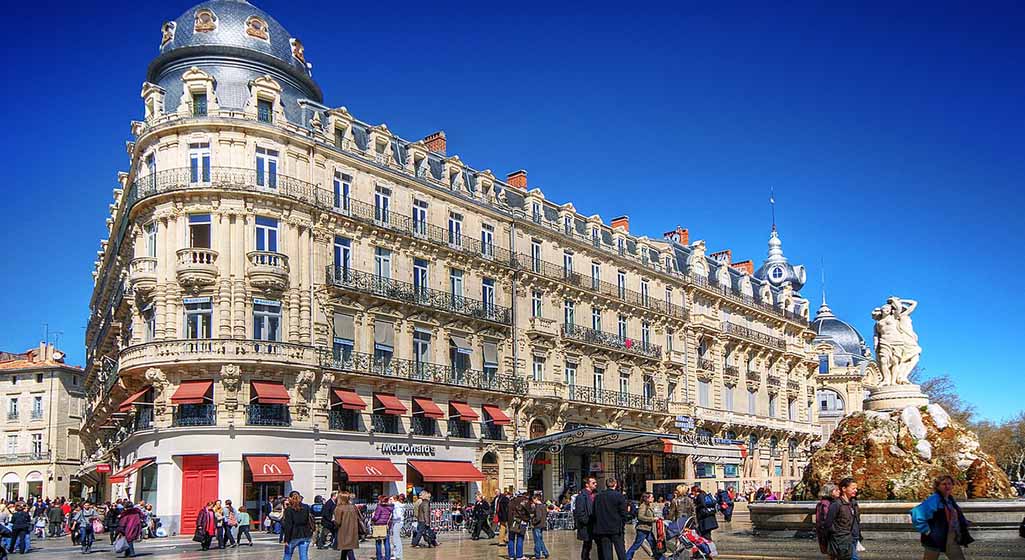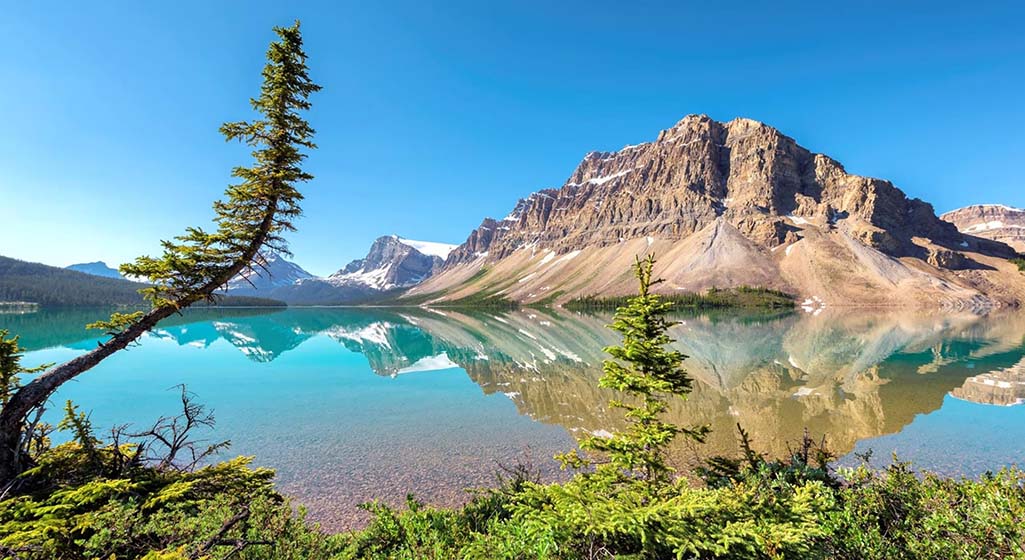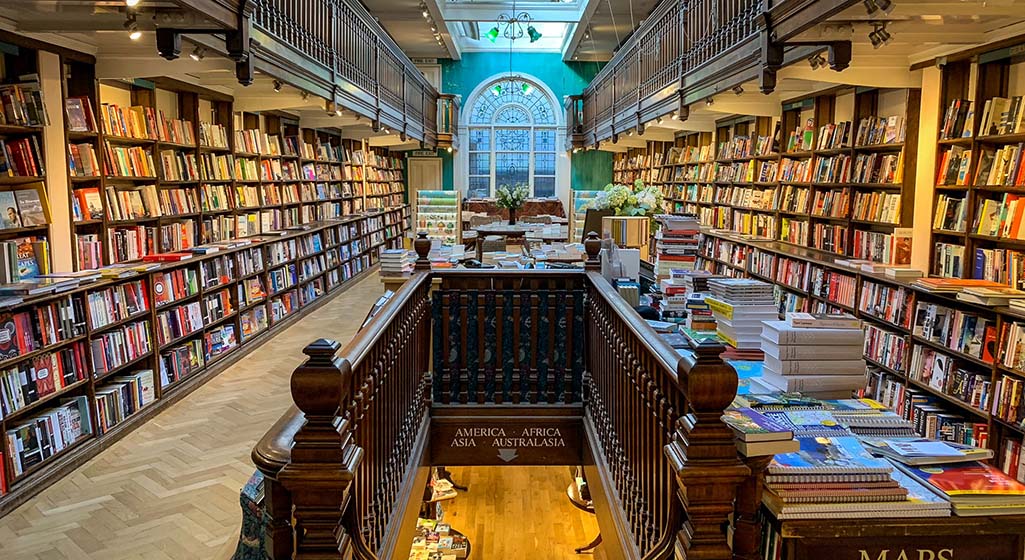In November, Montpellier still bathes in the gentle Mediterranean sunshine. The summer crowds have long gone, leaving behind a quieter, more local rhythm. It was in this perfect season—ideal for walking and full of artistic charm—that I set out to explore Montpellier in a day. This is a city where history and modernity intertwine, where medieval alleys coexist with avant-garde architecture and contemporary art. In just one day, I tried my best to uncover the soul of this fascinating place.
Breakfast: Watching the City Wake Up at Place de la Comédie
At 8 a.m., I stepped out of my hotel in the city center, greeted by a breeze tinged with the salty scent of the sea. Place de la Comédie wasn’t too crowded yet, but a few locals had already taken seats at the cafés lining the square. I sat down at “La Brasserie du Théâtre,” ordered a cappuccino and a flaky croissant, and settled into a sun-drenched terrace chair. Watching the trams slowly glide across the square, and the sunlight gradually illuminate the opera house, I felt an overwhelming sense of calm.
Place de la Comédie is the beating heart of the city and the starting point of my itinerary. The 19th-century buildings that ring the square glowed golden in the morning light, while joggers, dog walkers, and street performers began to fill in the canvas of daily life.
Morning: Wandering the Medieval Maze – Écusson Old Town
After breakfast, I followed Rue de la Loge toward Écusson, Montpellier’s historic old town. This district is a tangle of narrow, winding streets flanked by stone houses with iron balconies and wooden shutters.
I made a point to stroll down Rue du Bras de Fer, known as “Iron Arm Street,” famous for its pastel graffiti and colorful painted steps—a favorite among photographers. November’s sunlight brought a mellow glow to the vibrant murals, their colors rich yet subdued with the season. Along the way, artisan shops, antique bookstores, and art galleries constantly lured me to stop and explore.
Then I visited the Saint-Pierre Cathedral (Cathédrale Saint-Pierre), a 14th-century Gothic structure with two massive cylindrical pillars towering above the entrance—one of Montpellier’s most iconic landmarks. With few tourists around in November, I had the vast cloister nearly to myself. The echo of my footsteps across the stone floor made time feel suspended.
Lunch: An Artistic Ambience at Le Petit Jardin
For lunch, I tucked into a hidden gem in the old town—Le Petit Jardin on Rue Jean-Jacques Rousseau. This restaurant features a serene courtyard draped in greenery. Sunlight filtered through the olive trees, casting playful shadows on the white tablecloths.
I ordered a classic dish of sea bass with saffron cream sauce and a side of grilled seasonal vegetables in true southern French style. The fish was perfectly crisp on the outside, tender within, and the rich sauce balanced beautifully with the fresh flavors. A glass of local white wine added a refreshing touch. Soft jazz played in the background, and the friendly staff made even a solo traveler like me feel completely at ease.

Afternoon: Contemporary Art and Urban Design – MO.CO. & Antigone District
After lunch, I headed to the edge of the old town to visit MO.CO. (Hôtel des Collections), a contemporary art center housed in a former mansion. November’s featured exhibition explored the influence of Mediterranean culture on European contemporary art, presenting a variety of media from photography and installations to paintings. The spacious, light-filled galleries invited slow, thoughtful engagement with each piece.
I was particularly moved by a series of video works themed around “coastal memories,” showcasing images of weathered fishing gear and portraits of local fishermen from beaches near Montpellier. It was in these quiet moments that I felt the essence of the city—more than just streets and buildings, it’s a connection between people, nature, tradition, and the future.
Leaving the museum, I walked along Rue d’Antigone into the Antigone district, designed by Spanish architect Ricardo Bofill. This area, defined by neoclassical architecture, features grand, symmetrical lines and a cinematic atmosphere. Though it was already 3 p.m., the sun remained bright, carving sharp outlines into the elegant façades. I sat on a bench for a while, soaking up the warmth and tranquility of a November afternoon.
Late Afternoon: Chasing the Sunset by the Mediterranean – Half-Day Trip to Palavas-les-Flots
Around 3:30 p.m., I took tram line 3 and a connecting bus to Palavas-les-Flots, a charming seaside town just 30 minutes from Montpellier’s bustling city center. The journey itself felt like a gentle transition from urban energy to coastal calm—the tram hummed quietly through suburban neighborhoods, and the bus rolled past vineyards and salt marshes tinged with autumn hues.
In November, the beach at Palavas is calm and wide open—far from the bustling summer crowds and their parasols. The horizon stretched endlessly, blending into the soft pastels of the sky. The sea breeze was cool and carried the scent of salt and pine, so I wrapped my coat tighter around me and walked barefoot along the damp, fine sand, relishing the contrast of chill air and warm light. A few surfers still danced on the waves in the distance, their silhouettes carving fluid lines across the crests, while seagulls soared overhead, their sharp calls echoing in the vast, open sky.
As the sun began to set, it painted the sea in breathtaking shades of gold, burnt orange, and deep rose. I captured the moment with my camera, but more importantly, I stored it deep in my memory—it was one of the most peaceful, grounding highlights of the day, a private communion with nature that felt like a quiet gift.
Dinner: Ending the Day at La Diligence
As night fell, I returned to the city center, its narrow streets now bathed in amber light from antique lanterns. I made my way to La Diligence, a restaurant tucked inside a beautifully restored 16th-century stone house, nestled in one of Montpellier’s oldest quarters. Tucked away on a quiet side street, the entrance was draped in twisting grapevines and lit by warm, flickering lanterns that cast dancing shadows on the cobblestones.
Inside, the atmosphere was instantly welcoming. Vaulted ceilings, ancient stonework, and thick wooden beams created a sense of timeless intimacy. Classical music played softly in the background, blending seamlessly with the warm laughter of diners. I ordered beef stew in red wine, slow-cooked until meltingly tender, served with truffle-infused mashed potatoes that were rich, earthy, and indulgent—a dish that felt like a hug from southern France itself.
For dessert, I had a creamy chestnut mousse that hinted of cinnamon and vanilla, accompanied by a selection of local dried fruits: figs, apricots, and raisins soaked in a delicate syrup. The final touch was a glass of sweet Muscat wine, amber and floral, that wrapped up the meal like the closing lines of a well-told story. It was the perfect way to warm both body and soul on a crisp autumn night.

Evening Walk: Closing the Day at Esplanade Charles de Gaulle
After dinner, I wasn’t ready to end the day just yet. Instead of heading back to the hotel, I wandered slowly toward the Esplanade Charles de Gaulle, a wide, tree-lined promenade that stretches between the Place de la Comédie and the Corum opera house. The plane trees stood tall and leafless in the November air, their branches forming delicate silhouettes against the inky sky.
The path was softly illuminated by vintage-style lampposts, casting golden pools of light on the pavement. The whole scene felt suspended in time. Few people were around—just the occasional passerby or couple walking hand in hand—and a lone street performer strummed melancholic French chansons on a weathered guitar near the fountain. I sat on a bench beside the gently burbling fountain, letting the quiet rhythms of the city seep in.
In the distance, the Ferris wheel turned slowly, its lights reflected in the nearby windows, adding a touch of whimsy to the night. The moment felt dreamlike. November in Montpellier lacks the heat and noise of summer, but it offers something richer: a quiet passion, a heartfelt beauty, and a city life that moves at the rhythm of art, light, and gentle introspection. I felt deeply connected to that rhythm, grateful to end my day not in haste, but in harmony.
Montpellier’s Art and Sunshine – A Perfect Autumn Escape
This one-day itinerary moved at a relaxed pace—immersing me in the weight of history, the energy of contemporary culture, and the natural beauty of the Mediterranean. In Montpellier, you can move seamlessly from medieval streets to modern art galleries, from sunlit beaches to candlelit bistros.
November might not be peak season, but perhaps that’s why I could savor the city so deeply. The sun is gentle, the air is fresh, and the colors are soft and warm. Everything felt just right. If you find yourself here someday, try following this route. Maybe, like me, you’ll find it hard to leave.




